William R. Corliss Dies
Posted by: Loren Coleman on July 12th, 2011
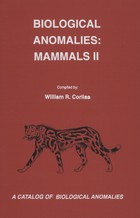
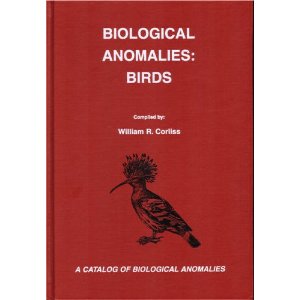
William Roger Corliss, who was born August 28, 1926, in Stanford, Connecticut, passed away last week, on July 8th.
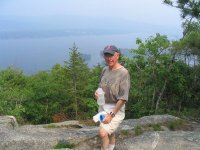
He was an American physicist and writer who became known for his interest in collecting data regarding anomalous phenomena, some of which included cryptozoological topics. William R. Corliss was presented with the Tim Dinsdale Award (named after the famed seeker of the Loch Ness Monsters) on June 10, 1994, at the 13th Annual Meeting of the Society for Scientific Exploration in Austin, Texas. It was presented to Corliss for his unique and comprehensive cataloguing of scientific anomalies. Corliss then gave the Dinsdale Lecture entitled, “The Classified Residuum.”

Arthur C. Clarke described him as “Fort’s latter-day – and much more scientific – successor.”
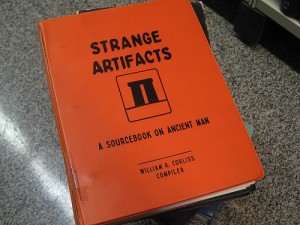
Since 1974, Corliss published a number of works in the “Sourcebook Project.” Each volume was devoted to a scientific field (archeology, astronomy, geology, and other topics) and featured articles culled almost exclusively from scientific journals. Corliss was inspired by Charles Fort, who decades earlier also collected reports of unusual phenomena. Unlike Fort, Corliss offered little in the way of his own opinions or editorial comments, preferring to let the articles speak for themselves. Corliss quoted all relevant parts of articles (often reprinting entire articles or stories, including illustrations). Many of the articles in Corliss’s works were earlier mentioned by Fort works.
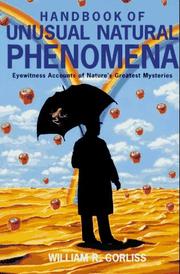
In his book Unexplained!, Jerome Clark describes Corliss as “essentially conservative in outlook.” He explains, “Corliss [was] more interested in unusual weather, ball lighting, geophysical oddities, extraordinary mirages, and the like — in short, anomalies that, while important in their own right, are far less likely to outrage mainstream scientists than those that delighted Fort, such as UFOs, monstrous creatures, or other sorts of extraordinary events and entities.”

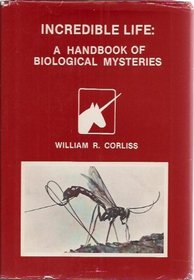
Arthur C. Clarke in Astounding Days: A Science Fictional Autobiography, said: “Unlike Fort, Corliss selects his material almost exclusively from scientific journals like Nature and Science, not newspapers, so it has already been subjected to a filtering process which would have removed most hoaxes and reports from obvious cranks. Nevertheless, there is much that is quite baffling in some of these reports from highly reputable sources.”

Corliss wrote many other books and articles, notably including 13 educational books about astronomy, outer space and space travel for NASA and a similar number for the Atomic Energy Commission and the National Science Foundation.
Books published include (with cryptozoology-related publications noted in bold):
- Propulsion Systems for Spaceflight (1960)
- Radioisotopic Power Generation (with D.G. Harvey; 1964)
- Space Probes and Planetary Exploration (1965)
- Scientific Satellites (1967)
- Mysteries of the Universe (1967)
- Teleoperator Controls (with E.G. Johnsen; 1968)
- Mysteries Beneath the Sea (1970)
- Human Factors Applications in Teleoperator Design and Operation (with Johnsen; 1971)
- History of NASA Sounding Rockets (1971)
- Man and Atom (with Glenn T. Seaborg; 1971)
- History of the Goddard Networks (1972)
- The Interplanetary Pioneers (1972)
- Strange Phenomena: A Sourcebook of Unusual Natural Phenomena (1974)
- Strange Artifacts: A Sourcebook on Ancient Man (1974)
- The Unexplained (1976)
- Strange Life (1976)
- Strange Minds (1976)
- Strange Universe (1977)
- Handbook of Unusual Natural Phenomena (1977)
- Strange Planet (1978)
- Ancient Man: A Handbook of Puzzling Artifacts (1978)
- Mysterious Universe: A Handbook of Astronomical Anomalies (1979)
- Unknown Earth: A Handbook of Geological Enigmas (1980)
- Wind Tunnels of NASA (1981)
- Incredible Life: A Handbook of Biological Mysteries (1981)
- The Unfathomed Mind: A Handbook of Unusual Mental Phenomena (1982)
- Lightning, Auroras, Nocturnal Lights, and Related Luminous Phenomena (1982)
- Tornados, Dark Days, Anomalous Precipitation, and Related Weather Phenomena (1983)
- Earthquakes, Tides, Unidentified Sounds, and Related Phenomena (1983)
- Rare Halos, Mirages, Anomalous Rainbows, and Related Electromagnetic Phenomena (1984)
- The Moon and the Planets (1985)
- The Sun and Solar System Debris (1986)
- Stars, Galaxies, Cosmos (1987)
- Carolina Bays, Mima Mounds, Submarine Canyons (1988)
- Anomalies in Geology: Physical, Chemical, Biological (1989)
- Neglected Geological Anomalies (1990)
- Inner Earth: A Search for Anomalies (1991)
- Biological Anomalies: Humans I (1992)
- Biological Anomalies: Humans II (1993)
- Biological Anomalies: Humans III (1994)
- Science Frontiers: Some Anomalies and Curiosities of Nature (1994)
- Biological Anomalies: Mammals I (1995)
- Biological Anomalies: Mammals II (1996)
- Biological Anomalies: Birds (1998)
- Ancient Infrastructure: Remarkable Roads, Mines, Walls, Mounds, Stone Circles: A Catalog of Archeological Anomalies (1999)
- Ancient Structures: Remarkable Pyramids, Forts, Towers, Stone Chambers, Cities, Complexes: A Catalog of Archeological Anomalies (2001)
- Remarkable Luminous Phenomena in Nature: A Catalog of Geophysical Anomalies (2001)
- Scientific Anomalies and other Provocative Phenomena (2003)
- Archeological Anomalies: Small Artifacts (2003)
- Archeological Anomalies: Graphic Artifacts I (2005)

++++Updated+++
William Roger Corliss |
CORLISS , William Roger
On July 8, 2011, WILLIAM ROGER CORLISS, age 84. Mr. Corliss was a Navy veteran having served during World War II. As a physicist, he was Director of Advanced Programs in the Nuclear Division at Martins in the 1960s. Later, he became a prolific writer, authoring 57 books on atomic energy, space propulsion, scientific satellites, teleoperators, wind tunnels, and scientific anomalies in all fields of science. He was a loving husband to his wife Virginia for 61 years, and is survived by his wife; his four children, Cathleen, Stephen, Jim, and Laura McCudden; seven grandchildren, and one great-grandson. He will always be remembered for his devotion to his wife and for his sense of humor.
The family will be holding private services. Contributions in his memory may be sent to his alma mater at The Rensselaer Polytechnic Institute Gifts Processing Center, P.O. Box 3164, Boston, MA, 02241-3164.
Published in Baltimore Sun on July 13, 2011
About Loren Coleman
Loren Coleman is one of the world’s leading cryptozoologists, some say “the” leading living cryptozoologist. Certainly, he is acknowledged as the current living American researcher and writer who has most popularized cryptozoology in the late 20th and early 21st centuries.
Starting his fieldwork and investigations in 1960, after traveling and trekking extensively in pursuit of cryptozoological mysteries, Coleman began writing to share his experiences in 1969. An honorary member of Ivan T. Sanderson’s Society for the Investigation of the Unexplained in the 1970s, Coleman has been bestowed with similar honorary memberships of the North Idaho College Cryptozoology Club in 1983, and in subsequent years, that of the British Columbia Scientific Cryptozoology Club, CryptoSafari International, and other international organizations. He was also a Life Member and Benefactor of the International Society of Cryptozoology (now-defunct).
Loren Coleman’s daily blog, as a member of the Cryptomundo Team, served as an ongoing avenue of communication for the ever-growing body of cryptozoo news from 2005 through 2013. He returned as an infrequent contributor beginning Halloween week of 2015.
Coleman is the founder in 2003, and current director of the International Cryptozoology Museum in Portland, Maine.










A beacon of data in the halls of science without any censorship or intolerance.
Purchased many a tome from the Source Book Project Newsletter’s snail mail bookstore in decades past.
Long before there was a Cryptomundo recommending top ten cryptozoology books of the year, there was Bill Corliss’s Sourcebook Project making the effort to acquire all the latest cryptozoolically themed titles from around the World for sale at discount.
Got most all of my Mackal, Shuker, and even a couple 1st editions of expanded re-issues of On the Track of Unknown Animals with the dragon of the Ishtar Gate jacket from his mail order bookstore.
Even some books from you Loren.
A great man. I am very sorry he has gone. His three Sourcebook Project books on astronomy are fascinating and stand up very well in the light of subsequent discoveries. I hope someone carries on his work.
Thank you for keeping us informed. I spoke with Bill in May. He struck me as an unassuming fellow who pursued knowledge with a vengeance. I shall miss his Science Frontiers and Anomalies newsletters.
I had some of William Corliss’ books from the Sourcebook Project back in the 1970’s and early ’80’s. They were very interesting and the material was presented in a clear and studied manner. I appreciate his work in this area and for introducing me to some of these phenomena. Thank you, Bill Corliss.
This posting has been updated with the brief obit carried in the Baltimore Sun on July 13, 2011.
That’s a major passing. I think I bought almost every one of his collections, over the years, long before the Internet was around. Boxes and boxes of them, read every word, always awaited the newsletters with bated breath…one of the greats that help tie so many loose ends together into the patterns of reality they reflected…surely one of the giants in the footsteps of other moderns like Heuvelmans, Ley, Sanderson, other folks I cut my teeth on as a child.
How sad. I was just reading his “Handbook of Unusual Natural Phenomena” yesterday, considering some of the discoveries that have surfaced since it was written. I have quite a few of his books and will actively seek more. They are both interesting, and good to fall asleep reading, if that makes sense.
Mr. Fort’s comments make for hard reading most of the time, until you sort of let loose and follow the ‘stream of consciousness’ banter. Frustrating for bringing tidbits in, then passing them by for the larger explanation,Mr. Fort was not as approachable as Mr. Corliss was (though Mr. Corliss was not as lyrical as Fort was)
Good thoughts for his family and wife. He lived a life that touched many, and will continue to bring interest and thought into the edges of science.
I just heard today that WRC had died — got a card in the mail from the Sourcebook Project. I discovered his work almost 20 years ago; I own about 15 Sourcebook Project volumes. We also exchanged a line or two occasionally, generally when I ordered a book from him. He seemed like a incredibly nice guy. It was wonderful to have a man with his training in the Fortean field. His books are an amazing compendium of information on the one hand, and a source of simple thinking and reading pleasure on the other. I always felt he was too skeptical about bigfoot reports generally, and it disappointed me that he took little interest in UFOs. But the work stands alone in its scope and scientific rigor. I will miss his contributions; it would be wonderful if someone had the capacity and the desire to continue his work.